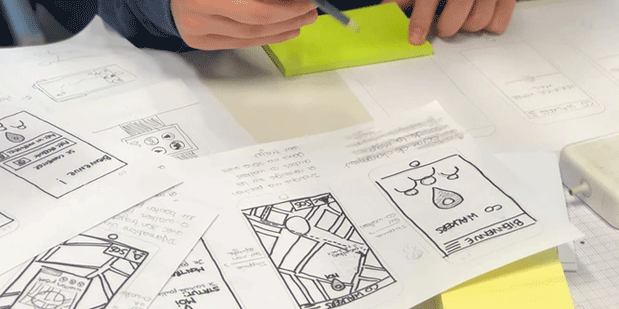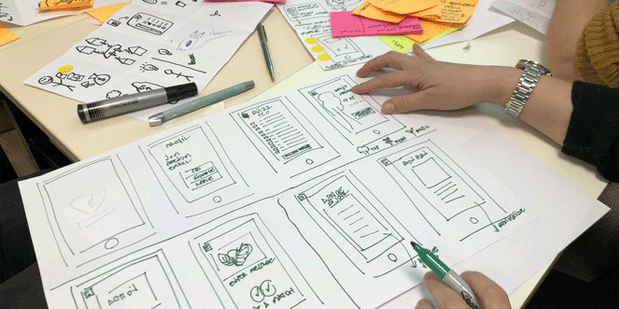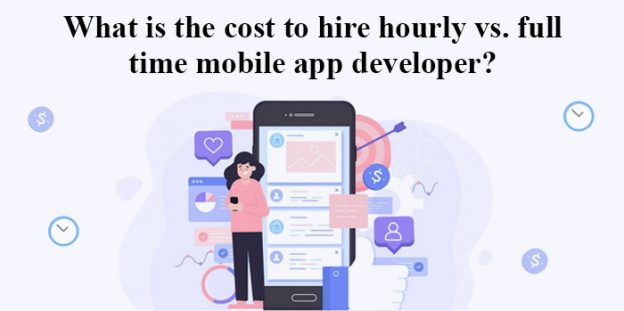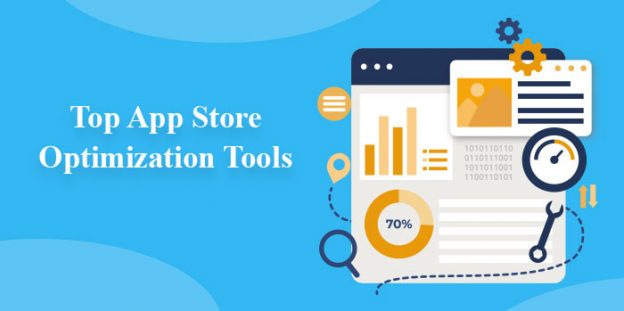Thorough Guide on a Perfect Mobile App Architecture & Its Importance

Today, more and more businesses are moving towards serving their target audience through their very own mobile phones. A very quick and optimum way of reaching people via phones is the development mobile application for your business. Until you are among the giants, no one is going to go over the web, type your business URL and do purchasing. You need to give them the quickest possible way so that while they are in the mental state of purchasing, you come in front of their eyes. Just having a mobile application is not enough though, you should have a good performing application that quickly gets data and ensure smooth navigation.
You need a robust foundation while you are developing anything so that the further elements do not fall off. That’s what you with your homes and that’s what you need to do with your business. There are thousands of applications made on a daily basis. Some get rejected by App stores while some fail to perform well due to a poor architecture. Mobile app architecture runs on a set of various methodologies and techniques to successfully build a structured mobile app.
There are a number of important factors which are needed to be considered while developing mobile app architecture. For example, the systems on which the application is going to run, the screen size on which it has to fit in, navigation type, user interface and more. These are the basic building blocks for any application which has to be taken care of while even planning an application. While planning any mobile app, you need to be aware of the developer who just become robots and performs tasks as instructed without letting you know the risks and outcomes. While you must be developing the mobile application for your business growth, if gone wrong it might bring you one of the biggest losses of your life.
Here is a guide on the importance factors while developing mobile app architecture in details.
Determining the Device Type
The first and foremost task is to determine that on what kind of devices the application is going to run. Would those be Tabs or Mobiles? What would be the size? What would be the other characteristics? Today, we do have a wide variety of smartphones. Some are big in size while others are small. Some have got slim body while others are foldable, Some have Windows, others have iOS or Android as operating systems. You need to ask the stakeholders that on what kind of devices you want application to run. The devices can be categorized on the basis of Memory, screen size, resolution, choice of framework and more. It is important to determine the device type and configurations because the application that you are going to develop might have some software or hardware requirements or limitations.
Bandwidth scenario is important to consider
Before developing the application, you need to see where your target audience resides. Because of the interrupted internet connectivity or fluctuations, you might not be able to bestow a good user experience. A user does not wait more than 10 seconds to close any application due to its low speed. While selecting the software and hardware protocols, you need to consider speed and power consumption. You application should also perform well with low internet connectivity so you need to design your data access mechanism, cache mechanism and state management accordingly.
Designing a User friendly interface
The interface should be simple and elegant so that the user intuitively navigate through the pages rather than keep finding where you have put what. Explore the real horizon of creativity according to the taste and choice of your target audience. The design should be organized. Consider keeping related things together and unrelated things separately. The application that communicates clearly and simply has greater success rate than ones with secretive pages. Good designs are not meant to overwhelm users by confusing them with unwanted information. A design should be reusable for internal & external components to maintain consistency and reducing the requirements of remembering and rethinking.
Ensure effortless navigation
There can be N number of navigation methods you can follow while designing the applications. Some of the popular ones are as follows.
1. Hamburger Menu: To save the precious mobile real estate, the navigation bar is hidden inside a three lined icon. This is one of the mostly used Navigation methods as it sits comfortably at the left corner of the application and people are also used to it. Though, you need to avoid hiding any important information within hamburger as the user might just ignore it.
2. Bottom Navigation: Bottom navigation gives quick access to different pages of the application. It is the row of quick links at the bottom of the application. Users can hold their phones and use their thumbs effortlessly to navigate through the app. This bar generally contains a minimum of 3 links to a maximum of 5 links.
3. Cards: Cards come in all shapes and sizes and these pop up as a result of their customizable nature and being highly visual. Cards based navigation has proven to be great for aggregating separate pieces of information.
4. Gesture based navigation: A great example of gesture based navigation is Tinder where user can navigate by quickly swiping to perform the desired action. Gestures might include dragging, touching, zooming in or zooming out.
As per your business model and target audience, you need to make a right choice of navigation method. For example, if you are coming up with a matrimonial application then there can be nothing better than gesture based navigation whereas if you are a beautician coming up with a beauty and wellness app, then cards can beautifully assist you as you need to make it enchanting and attractive through pictures.
Elements of Mobile Application Architecture Design
A mobile app architecture contains three layers depending upon the functions we perform in each.
a. Presentation
b. Business
c. Data
Presentation phase consists of user interface and presentation logics. At this step, the team has to decide the way in which application is going to present itself in front of end users. The team needs to decide onto theme, font size, features and their location for a reliable foundation.
Business layer consists of application facade, workflow, components and entities of a business. It focuses upon how the business is going to be presented in front of the end users. There are two sub components here named service layer and domain model layer. Service layer defines application functions to be made available for clients and users and domain model tells about expertise of specific problem domain.
Data layer focuses on data access components, service agents and utilities.
Once you have taken care of all the three layers, you have to focus upon the fourth layer consisting of configuration, security and connectivity.
Make sure that all the components of the application are organized. The architecture should be capable enough to speak about the business domain like is it Tours & Travels application or food delivery system. You need to also focus upon the scalability of the application that whether is it going to support enhancement or not. You need to ask yourself whether it is going to be a complex application with over 25 pages or a simple one. The complexity has to be defined initially so that the choice of resources who are going to work on the project can be made wisely. You need to determine whether the team can work on the project independently or not and what would be the key components that are to be developed and tested first.
A mobile app architecture is very important for your successful and profitable business ventures. It reduces the risk factors and also eliminate reworks and hence re-application of the cost. A good mobile app architecture facilitates the system to be portable to respond to the changes. It should be highly maintainable so as to adapt as per the market’s demand. The architecture has to be robust to secure all the data consumed by the mobile application. The architecture should ensure to satisfy the performance expectations of the users & should be able to retrieve the data quickly in an efficient manner. It is one of the most crucial steps if you business is moving towards mobility. It helps towards the growth of the application in the market. Whether you are yourself a developer or you are hiring a team of developers for your next project, if you follow all the steps thoroughly then consider that you have crossed half way towards your destination.
Have you worked upon the mobile app architecture for your next project? Do not forget to add in the comment sections that what is the most important element of a mobile app architecture according to you.









